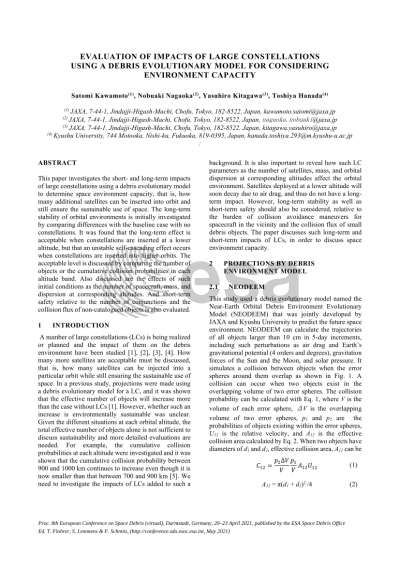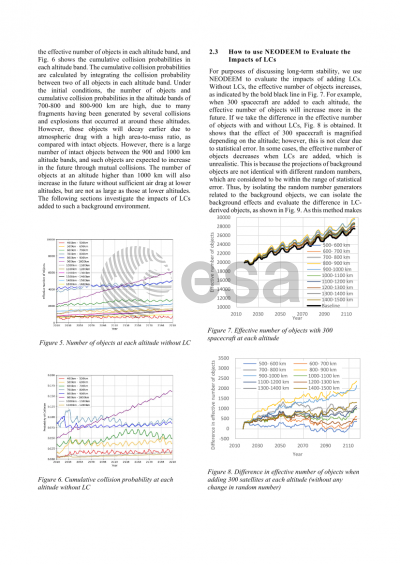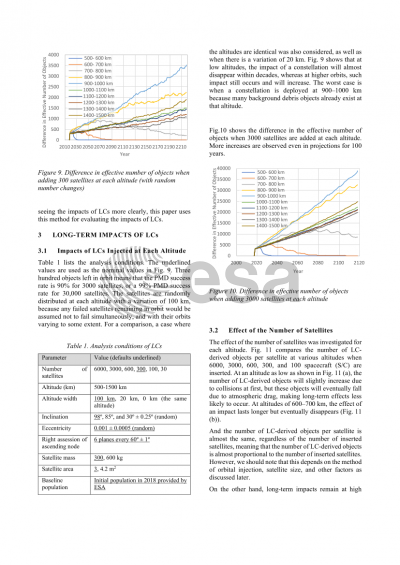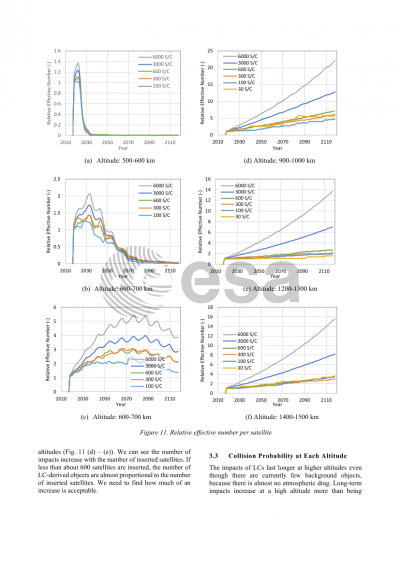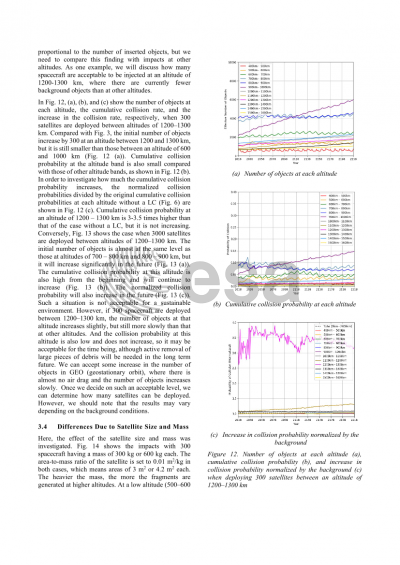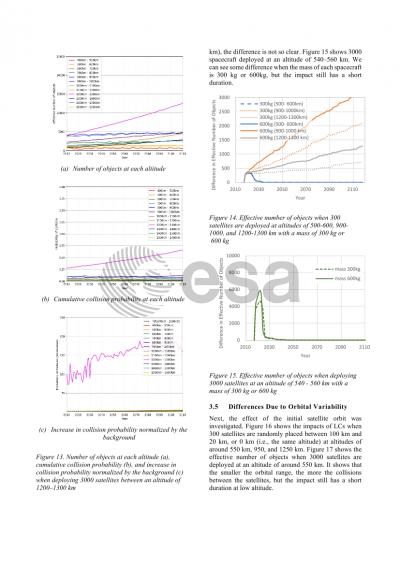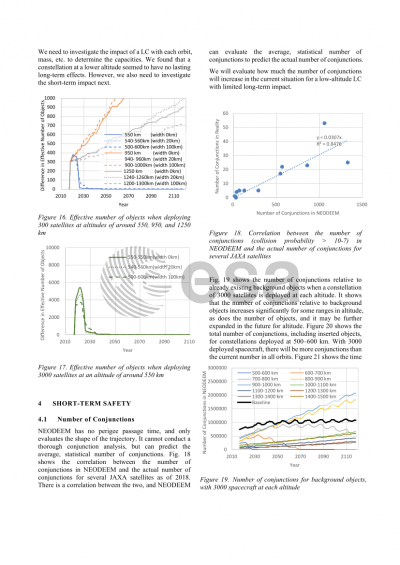Document details

Abstract
A large number of constellations have been proposed in recent years at each orbital altitude, and it is necessary to find out how many objects can be inserted into orbit with ensuring sustainable use of space. It is also important to reveal how the parameters of constellations such as size, mass, and the number of spacecraft in each orbital plane affect their impacts to the orbital environment. In this presentation, long-term and short-term impacts of large number of objects in each orbital altitude band are evaluated using a debris evolutionary model called Near-Earth Orbital Debris Environment Evolutionary Model (NEODEEM), developed in collaboration with Kyushu university and JAXA. We have been evaluating evolutions of cumulative collision probability in each altitude band for many cases, since the total effective number of objects is insufficient to discuss the different situation in each altitude. In this study, we evaluated the cumulative collision probability and the number of conjunctions for short-term effects, while the stability of orbital environment is evaluated for the long-term effects. The effects are compared with the baseline case by normalizing with those of the baseline case where no additional large number of objects inserted. We found that when large number of objects are inserted into some lower altitude, the long-term effect is acceptable while unstable self-cascading effect is observed when the objects are inserted into some higher altitude, because not only air density but also currently existing debris objects in those altitude are different. Then, we identified objects that originated from the inserted objects and examined their effects separately. For example, if we insert some thousand objects in some orbital regions, the number the objects originated from the inserted objects decreases over time at low altitude, while it will continue to increase at certain altitudes. And when the number of inserted objects is too large, their impact is disproportionally large to the number of inserted objects. The effects of initial conditions such as the number of objects in each orbital plane, dispersion of altitude are also investigated, and how to define space environment capacity is discussed.
Preview
